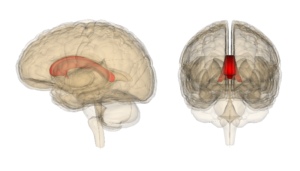When it comes to making a sound analysis of a moral scenario, who or what inside of you is responsible? Philosophers have been barking back and forth for centuries about abstract concepts such as reason and intuition, and which is best for comprehending a given situation.
For scientists, however, it is more relevant to understand which parts of the brain absorb the basic facts, and which complete the analysis and conclusion. A new UBC study adds to the growing evidence that the right hemisphere takes the leading role in analyzing intent and that the left side only looks at the outcome.
Why is this significant? Studies like this help us understand what parts of the brain can draw the best conclusions from moral scenarios and why we might interpret them in a particular way.
Split-brain subjects
To study complex topics like brain function, researchers often look to exceptional case studies where the brain has been altered by injury or surgery. Imagine if the highway between the left and right hemispheres of the brain – the corpus callosum – was severed, largely disrupting communication between the two.

This is most often caused by a corpus calloscotomy – a rather extreme measure where the corpus callosum is surgically severed to control epileptic seizures. Split-brain patients live with a severed corpus callosum and have historically been attractive candidates for researchers investigating what part of the brain is responsible for what mental process.
Even split brain patients retain more minor channels of communication between brain hemispheres, and after injury, the brain has been known to adapt to change. A patient can still lead a relatively normal life without a functioning corpus callosum, though there are some extreme challenges.
Isolating the hemispheres
The method of the experiment was key to isolating one hemisphere. Your left side is a talented linguist: the go-to team member for soaking up and interpreting language. Your right side has only some basic skills at absorbing and understanding words, so instead, the researchers presented scenarios using imagery.
J.W, a person with a split-brain, was shown ‘morality plays’ and his interpretations were used to measure the result. The plays are simple pieces showing actors with intentions, positive or negative, and their effect on a given scenario.
This could be something like Jane wants to put a toy on the shelf, but Tom intentionally knocks the shelf down to stop her achieving her goal. An unsavoury character, that Tom.
Alternatively, there could be a neutral character, Bob, who stumbles into the shelf and unintentionally destroys it. The outcome is the same, poor Jane has no shelf on which to place her beloved toy, so who did J.W blame?
Righty-tighty, lefty-loosey
Well, at the end of a showing, ‘Who was nicer?’, came up on the screen. The videos, a visual form of communication, should preferentially activate brain processes in the right brain. J.W was required to answer by pointing with a contralateral finger – controlled by the opposite side of the brain – so in this case, his left index finger.
J.W correctly identified the victim and aggressor 82% of the time. Moreover, in an inverse test where he was presented scenarios verbally – compatible with left hemisphere isolation – he got a score of only 47%.
So for clumsy old Bob, he was subject to which side of J.W’s brain made the decision. If it was the right side, Bob was found innocent, but if it was the left, Bob was no better than Tom. As the authors concluded, “our results suggest that the right hemisphere is necessary and sufficient, and the left hemisphere is not necessary, for generating intent-based moral judgements.”








































